DNA Sensor Guide
Discover the science of DNA testing

Nutrition Sensor
We all know that a balanced diet is important for health and that unhealthy foods can lead to significant damage over time.
However, “unhealthy food” means different things to different people. What is healthy for one may cause issues for others.
The reason for these differences lies in our genes.
Our Nutrition Sensor analyses these differences – so that in future, you can eat foods that are really good for you.

Toxo Sensor
Our bodies are subjected to countless harmful substances every day – heavy metals such as lead and mercury, pesticides or car exhaust fumes are just a few of them.
It is therefore particularly important for our body to filter all these pollutants and eliminate them.
It is helpful to be aware of your individual genetic detoxification
ability to avoid negative consequences of exposure to harmful substances on the body. This can be done by analysing specific genes – really easy with our Toxo Sensor.

Weight Sensor
Our genes also determine how our body uses the food we give it. Knowing which foods help you gain or lose weight is especially important. This is because a high-fat or high-carbohydrate diet does not produce the same result for every person.
The same applies to exercise: while some people lose weight very quickly with certain types of sport, others achieve little success with the same effort. That’s why our Weight Sensor analyses the exact genes that directly influence your body weight – from food metabolism and the effect of certain types of sport to feelings of hunger and satiety.

Performance Sensor
Anyone involved in competitive sports knows that good performance requires more than regular training. Optimal nutrition and proper recovery also play an important role.
However, our basic physical performance depends first and foremost on our genes. They determine what we are capable of and how we can deliver best. For example, are you more of an endurance athlete or is your body more designed for speed?
We can determine exactly that with a genetic analysis.
Based on the results of the analysis, training and nutrition can then be tailored to optimise your individual performance for sporting success and at the same time reduce the risk of injury.

Burnout Sensor
Burnout syndrome is becoming an increasingly widespread problem. Those affected often feel completely worn out and are sometimes even overwhelmed by simple everyday tasks. The journey back to normality is often difficult and requires a lot of patience as well as a fundamental change in lifestyle.
Today, however, we know that genes also have a significant influence on perception of stress and therefore also on the personal risk of burnout. Genetic analysis can therefore be an important part of effective prevention.
Our Burnout Sensor analyses all relevant genetic variations that are responsible for your individual perception of stress. This not only allows us to determine how sensitive you are to stress, but also how high your personal risk of burnout is. This provides a very good basis for targeted recommendations

Beauty Sensor
Crafting individualized cosmetics based on Beauty Sensor results—analyzing collagen breakdown, UV protection, skin moisture, Q10 effectiveness, selenium requirement, inflammatory reactions, and biological age. Our formulations provide personalized care, delving into unique genetic characteristics for a skincare experience.
Investigating over 20 gene variations, this analysis offers insights into skin health based on current scientific studies, aiding in personalised skincare strategies.
By looking into the person‘s genes, we carefully select individual blends of active ingredients, ensuring each customer derives optimal benefits from their personalised skincare product. Our cosmetics are manufactured to the highest standards, guaranteeing that every product is not only effective but also safe for the skin. Rigorous quality controls accompany our production process, from sourcing raw materials to regular testing in each production batch.
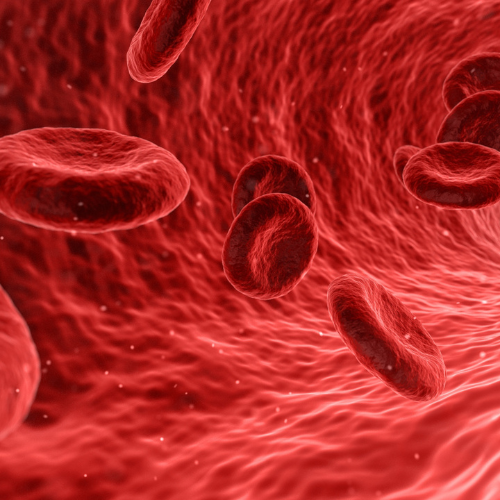
Iron Sensor
The Iron Sensor provides information on whether the body is absorbing too much iron and the risk of developing haemochromatosis is increased.
Although iron is important for the body, excess consumption is also a cause for concern. This is particularly dangerous for people who suffer from the iron storage disease known as haemochromatosis. This hereditary condition leads to increased absorption of iron in the small intestine.
A genetic test can help diagnose this disease at an early stage. With the Iron Sensor, we are therefore investigating more than 2 genetic variations that play a role in the absorption of iron from the diet. This allows us to detect whether the body is absorbing too much iron from food and whether there is a hereditary iron storage disease.
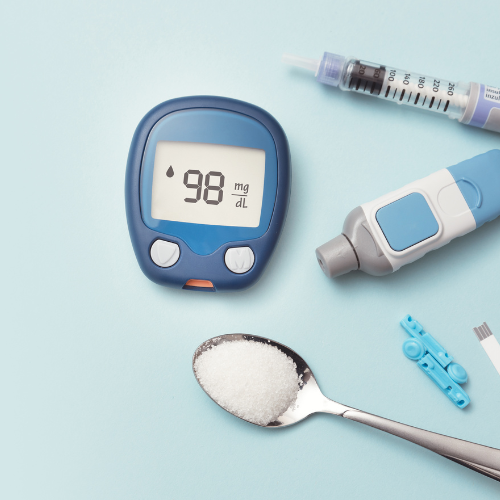
Diabetes Sensor
The Diabetes Sensor provides information on how high the risk of developing diabetes is and helps with prevention.
The risk of developing type 2 diabetes varies from person to person. Factors such as poor eating habits and obesity certainly play an important role. However, it is primarily genetic predisposition that determines this.
With the Diabetes Sensor, we are therefore investigating more than 8 known genetic variations that play a role in diabetes risk, as well as the effect of more than 35 relevant drugs based on the individual genetic profile.

Alzheimer’s Sensor
The Alzheimer’s Sensor provides information on how high the personal risk of developing Alzheimer’s is and helps with prevention.
Alzheimer‘s disease usually occurs in people over the age of 65. The disease results in increasing death of certain areas in the brain and leads to a progressive loss of cognitive abilities in those affected.
So far, it is not clear what exactly causes Alzheimer‘s disease. However, it is known that certain genetic defects can significantly increase the risk of the condition.
With the Alzheimer‘s sensor, we are therefore investigating the two gene variants that are known to play a major role in individual Alzheimer‘s risk.

Depression Sensor
The Depression Sensor provides information on how high the risk of developing depression is and what preventive measures can help.
Depression is one of the most common mental illnesses. It is estimated that around seven percent of all adults suffer from depression and its associated symptoms.
In addition to external factors such as strokes of fate or, in the case of women, due to pregnancy, certain genes also have a significant influence on the individual risk of developing depression.
With the Depression Sensor, we therefore investigate more than 7 relevant gene variations that play a role in the development of depression. We also analyse the individual effect of over 60 anti- depressants based on the genetic profile.

Schizophrenia Sensor
The Schizophrenia Sensor provides information on how high the risk of developing schizophrenia is and helps in formulating effective prevention and treatment.
Schizophrenia is a severe mental illness with a chronic course. This mental disorder can manifest itself through delusions and hallucinations, among other things.
The exact causes of schizophrenia are not yet clearly understood. However, it is assumed that the disease is triggered by an interplay of psychosocial and biological factors. Genetic predisposition plays a particularly important role in this.
With the Schizophrenia Sensor, we therefore investigate more than 3 relevant gene variations associated with the development of schizophrenia. We also analyse the individual effect of over 50 medicines based on the genetic profile

Thrombo Sensor
The Thrombo Sensor provides information on whether defects in relevant genes lead to an increased risk of thrombosis.
Thrombosis is a disease that leads to the formation of blood clots.
These can clog vessels and thus block the blood supply to the affected areas. Depending on where the thrombosis occurs, it can lead to a stroke or heart attack. Given these considerable risks, it therefore makes sense to have an analysis of the relevant genes carried out.
With the Thrombo Sensor, we investigate more than 4 gene variations that are associated with an increased risk of thrombosis.
We also check whether certain drugs can cause problems due to the individual genetic profile and should therefore be avoided.

Cardiovascular Sensor
The Cardiovascular Sensor provides information on how high the personal risk of developing cardiovascular disease is and supports you with prevention.
Problems with the cardiovascular system are widespread and cause problems for more and more people. Depending on the type of disease, they can lead to permanent impairment and, in the worst case, even be life-threatening.
In addition to obesity, diabetes, high blood pressure and excessive alcohol consumption and smoking, genetic predisposition also plays a role in the development of cardiovascular diseases.
With the Cardiovascular Sensor, we investigate more than 20 gene variations that are associated with the development of cardiovascular diseases. We also check how your genetic characteristics affect the efficacy of over 115 relevant drugs.
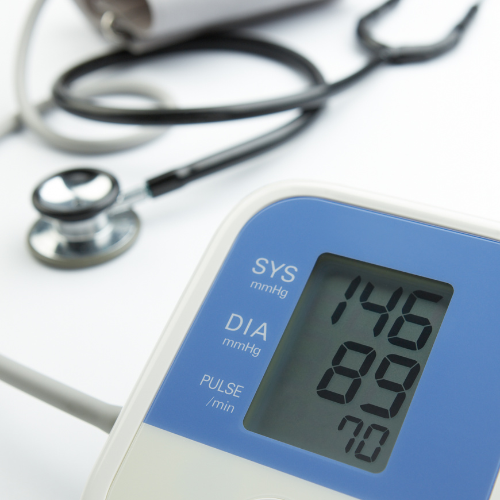
Hypertension Sensor
The Hypertension Sensor provides information on whether there is an increased risk of high blood pressure and shows which measures are useful for prevention and treatment.
High blood pressure (hypertension) is not painful and often causes no symptoms for a long time.
Accordingly, it is often detected far too late and may have already caused serious damage to the heart and blood vessels. To avoid such problems, the early diagnosis of high blood pressure is very important. In addition to obesity, lack of exercise, smoking and a high-salt diet, genetic predisposition also plays a major role in the development of high blood pressure.
Within the framework of the Hypertension Sensor, we investigate more than 3 gene variations that can favour the development of high blood pressure.

HIV Resistance Sensor
The HIV Resistance Sensor provides information on how high the individual risk of infection with HIV is.
The human immunodeficiency virus (HIV) has spread globally since the 1980s and is estimated to have already claimed almost 40 million lives. Despite medical advances and declining death rates, more than 680,000 people died as a result of their HIV infection in 2020 alone.
Although there is no 100% protection against HIV infection, not all people are at the same risk. Depending on the genetic predisposition, there are sometimes considerable differences that can either significantly reduce or increase the risk of infection.
With the HIV Resistance Sensor, we therefore investigate the CCR5 gene, which is relevant for the risk of HIV infection. More than 60 gene variants are also investigated with regard to the efficacy of over 25 drugs.
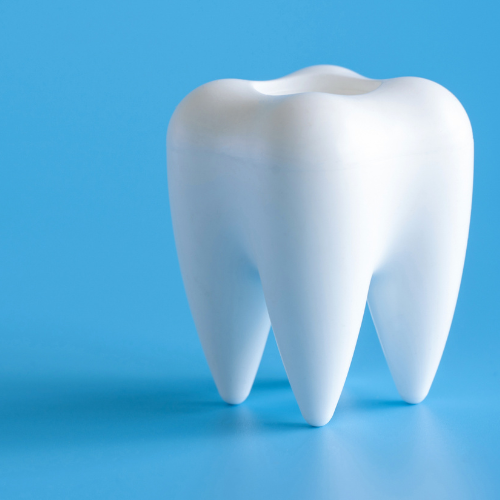
Periodontitis Sensor
The Periodontitis Sensor determines the individual risk of developing periodontitis and helps with effective prevention.
Periodontal disease, or periodontitis, is the most common oral disease along with caries. It is caused by bacteria that invade the gums and cause inflammation. From there, they can then also attack the jawbone, so that the teeth ultimately even fall out.
In addition to poor oral hygiene, certain genetic defects can also lead to an increased risk of periodontitis.
With the Periodontitis Sensor, we therefore investigate more than 4 gene variations that play a role in the development of periodontitis, as well as the effectiveness of over 10 drugs based on the genetic profile. We also investigate four genetic variations that are responsible for whether a titanium dental implant can be considered as a permanent solution.

Pharmaco Sensor
Our Pharmaco Sensor shows which medicines are likely to have side effects, helping to find the right treatment strategy and pre-vent risks. Ideally, a medicine helps to treat a disease and cure the patient.
However, as enormous as medical progress has been in recent decades, people sometimes react differently to taking the same medicine. The reason for this lies in our genes. This is because there are a number of genetic defects that can lead to a medicine not working properly or not being tolerated.
Within the framework of the Pharmaco Sensor, we investigate the gene variations that play a role in the efficacy and tolerability of medicines. We are therefore able to evaluate over 2,200 comm onmedicines based on a patient‘s genetic profile with regard to their efficacy and possible intolerances.

Breast Health Sensor
The Breast Health Sensor shows how high the individual breast cancer risk is and helps with optimised prevention and treatment.
The number of cases of breast cancer has virtually doubled in the last 50 years. Although the mortality rate is falling constantly thanks to medical progress, more women still die from breast cancer than from any other type of cancer.
In most cases, breast cancer is triggered by a combination of environmental influences and existing genetic defects. Some women therefore have a significantly higher risk due to their genetic predisposition, which is further exacerbated by an unhealthy lifestyle.
With the Breast Health Sensor, we therefore investigate more than 9 relevant gene variations and evaluate the efficacy of more than 65 drugs based on the genetic profile. We determine whether there is an increased likelihood of breast carcinoma and whether special attention should be paid to screening.

Prostate Health Sensor
The Prostate Health Sensor provides information about how high the risk of prostate cancer is and helps with the adoption of effective strategies for prevention and treatment.
Prostate cancer is one of the most common malignant tumours diagnosed in men. The risk increases sharply with age, which is why regular prostate examinations are strongly recommended from the age of 45 at the latest. In addition to age, genetic predisposition also plays a major role in whether a patient develops prostate cancer and how the cancer progresses.
With the Prostate Health Sensor, we therefore investigate more than 9 relevant gene variations associated with the development of prostate cancer. We also analyse the patient‘s genetic profile with regard to possible limitations in the effect and tolerance of over 35 different medications.
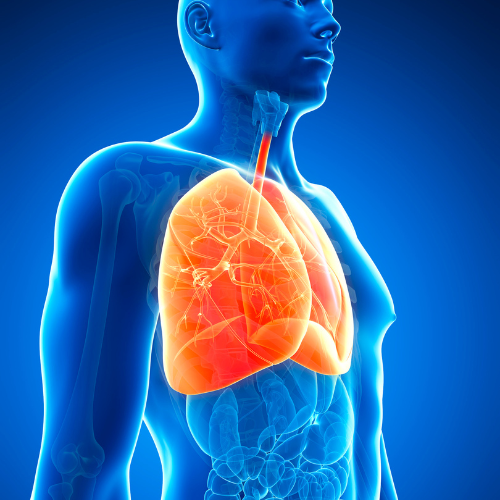
Lung Health Sensor
The Lung Health Sensor provides information on how high the patient‘s individual lung cancer risk is and thus supports effective prevention.
Lung cancer is one of the most common types of cancer and also has a particularly high mortality rate. One of the reasons for this is that lung cancer is often only detected late and the disease is then usually already very advanced.
Smoking is still considered the biggest risk factor for lung cancer. But also certain genetic variations can cause the body‘s detoxification function for certain harmful environmental influences, such as exhaust fumes, to not work properly. Within the framework of the Lung Health Sensor, we therefore investigate the relevant gene variations that have an influence on the risk of lung cancer. We also test more than 35 different medicines to see whether the patient‘s genetic profile leads to limitations in terms of efficacy as well as tolerability.

Skin Health Sensor
The Skin Health Sensor uses genetic analysis to show how high the individual risk of skin cancer is and helps with prevention.
Normally, skin cancer is comparatively easy to diagnose and, if detected early, can also be well treatable. Regular preventive examinations are therefore sensible and can help to notice not only basal cell carcinomas but also the particularly dangerous malignant melanoma in good time and to take the necessary treatment measures.
However, in addition to excessive UV radiation, genetic factors also play a role in the individual risk of skin cancer. With the Skin Health Sensor, we therefore investigate more than 15 relevant gene variations associated with the development of basal cell carcinomas or malignant melanomas. We also evaluate the efficacy of over 25 medicines based on the genetic profile.

Colon Health Sensor
In western industrialised countries, bowel cancer is one of the most common cancers. Early diagnosis and treatment is therefore of great importance for a positive prognosis.
In addition to an unhealthy lifestyle and the excessive consumption of sausage and red meat, genes, however, also have a significant influence on the development of bowel cancer.
With the framework of the Colon Health Sensor, we therefore investigate more than 17 relevant gene variations associated with the risk of bowel cancer. We also analyse the effect of over 30 relevant medicines.

Gluten Sensor
The Gluten Sensor provides information on whether there is an increased risk of gluten intolerance due to a genetic defect.
Gluten is the name for a mixture of certain proteins found in some grains. Gluten intolerance (coeliac disease) is a widespread food intolerance that affects an estimated one percent of the population in western countries.
In most cases, two specific genetic defects are responsible for the development of gluten intolerance. These lead to the immune system classifying the gluten in the intestine as a danger and fighting it in a similar way to a bacterial infection. The result: chronic inflammation with sometimes extensive symptoms.
With the Gluten Sensor, we therefore investigate the two genetic variations that may be responsible for the development of gluten intolerance.

Lactose Sensor
The Lactose Sensor provides information on whether there is a lactose intolerance due to a genetic defect.
Milk is considered healthy and is especially recommended as a source of calcium for stable bones. However, many people suffer from lactose intolerance and therefore cannot tolerate dairy products. A genetic defect is responsible for this, which means that the lactose contained in milk can no longer be processed and the consumption of lactose thus leads to severe digestive problems.
With the Lactose Sensor, we therefore investigate whether a genetic variation can lead to lactose intolerance. We also check whether a sufficient intake of calcium is guaranteed.

IBD Sensor
The IBD Sensor uses genetic analysis to determine the risk of developing Crohn‘s disease.
Crohn‘s disease is an inflammatory bowel disease. It can cause both chronic and relapsing symptoms. Typical symptoms include in particular abdominal pain, diarrhoea, weight loss and fatigue.
Crohn‘s disease can also lead to dangerous nutrient deficiencies and cause inflammation in other parts of the body. The exact causes of Crohn‘s disease are not yet clearly understood. In addition to an unhealthy lifestyle, however, genetic changes are primarily responsible for the disease.
With the IBD Sensor, we therefore investigate the NOD2 gene for more than 2 gene variations that are associated with the development of Crohn‘s disease. We assess the effect of over 20 relevant medicines based on the genetic profile.

Bone Health Sensor
The Bone Health Sensor determines how high the risk of osteoporosis is and enables effective prevention.
Osteoporosis is a common bone disease that primarily affects older people. Around 80 percent of all cases affect women after their menopause, with smoking further increasing the likelihood.
Certain genes are also linked to bone density and the development of osteoporosis. Since the disease is often noticed quite late, a genetic analysis is therefore a good way to detect and treat bone loss at an early stage.
As part of the Bone Health Sensor, we analyse four genes relevant to osteoporosis and examine the effects of the genetic profile on the intake of over 25 different medicines. In this way, we gain important insights to determine the individual risk of osteoporosis and, if appropriate, make recommendations for prevention.
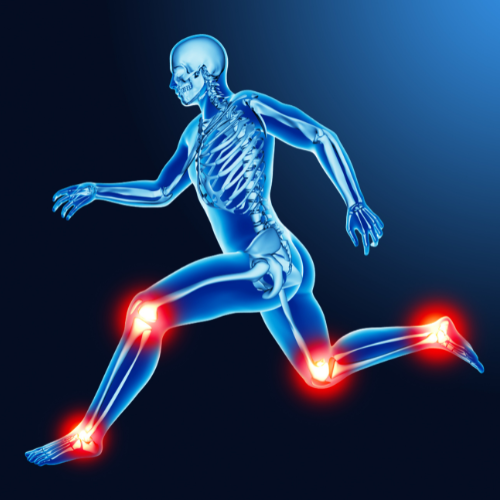
Joint Sensor
The Joint Sensor uses genetic analysis to show whether there is an increased risk of inflammatory diseases of the joints and helps with prevention.
There are a number of inflammatory joint diseases, some of which can occur at a young age and are often associated with a severe reduction in quality of life for those affected. Since a cure is usually not possible, the early diagnosis of inflammatory diseases of the joints is particularly important. The likelihood of inflammatory joint disease is largely determined by the patient‘s genes.
Within the framework of the Joint Sensor, we therefore investigate the relevant gene variations associated with joint inflammation.
We also examine the influence of the patient‘s genetic profile on the effect of over 55 different drugs.

AMD Sensor
The AMD Sensor provides information on whether there is a genetic risk of age-related macular degeneration.
It is quite normal for eyesight to deteriorate with age. For many people, however, the slowly progressive loss of vision is not limited to age-typical restrictions. Often, additional eye diseases cause vision to suffer far beyond normal levels. One such disease is age- related macular degeneration (AMD).
The exact causes of age-related macular degeneration are still unclear. However, it is known that at least 3 different genes have a significant influence on AMD disease.
With the AMD sensor, we therefore examine more than 2 genes.
By doing so, we not only determine the risk of disease, but can also recommend targeted preventive measures.

ADHD Sensor
The ADHD Sensor shows whether certain genetic variants can contribute to the development of ADHD and thus supports the diagnosis in specific suspected cases.
In addition to environmental influences, such as drug abuse during pregnancy or a disturbed parent-child relationship, certain genetic variants can also be detected in around 75 per cent of all cases.
With the ADHD Sensor, we therefore investigate more than 3 relevant gene variations associated with the development of ADHD. We also check how the genetic profile influences the effect of over 70 relevant drugs.

Glaucoma Sensor
The Glaucoma Sensor uses genetic analysis to determine whether there is an increased risk of developing glaucoma.
Glaucoma causes irreversible damage to the nerve fibres in those affected and even leads to complete loss of vision in around 10 percent of all sufferers. Early diagnosis is therefore very important.
With the Glaucoma Sensor, we investigate the LOXL1 gene, which is relevant for glaucoma. We also check whether the genetic profile has an influence on the effect and tolerability of more than 15 relevant drugs.









